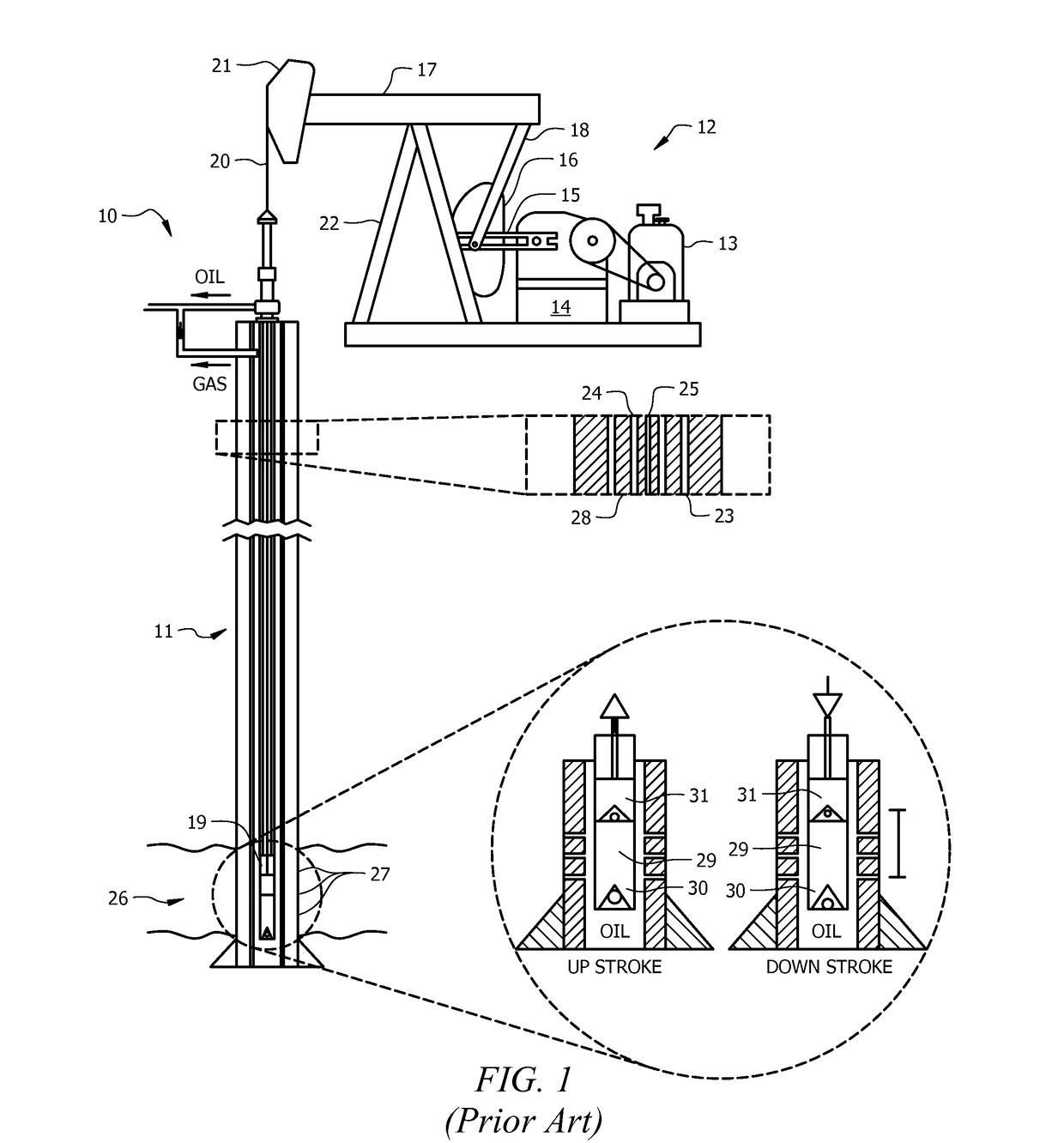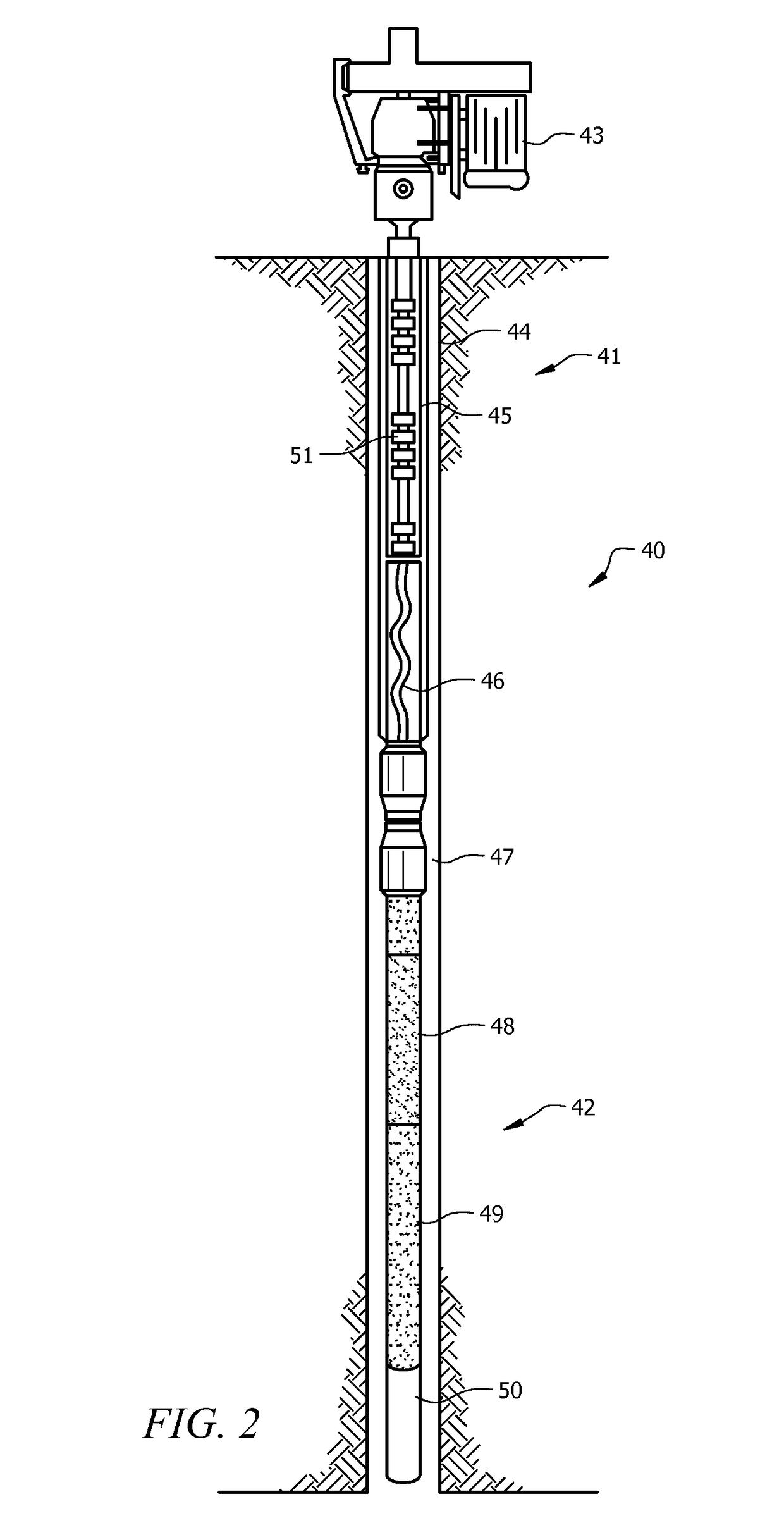Down-hole gas and solids separator utilized in production hydrocarbons
a technology of hydrocarbon production and separator, which is applied in the direction of fluid removal, borehole/well accessories, earthwork drilling and mining, etc., can solve the problems of increasing fracture sand, tubing or artificial lifting mechanism, and a multitude of producing problems for oil and gas operators
- Summary
- Abstract
- Description
- Claims
- Application Information
AI Technical Summary
Benefits of technology
Problems solved by technology
Method used
Image
Examples
Embodiment Construction
[0020]Referring now to FIG. 1, a diagram of a typical sucker rod pump used in oil wells is described. The sucker rod pump is described only for the purposes of illustrating the operation of a typical oil well and is not intended to be limiting in any manner as the present invention is applicable to any producing oil well including those using any means of artificial lift, such as rod pumping, electric submersible pumps, progressive cavity, and other methods.
[0021]Well 10 includes well bore 11 and pump assembly 12. Pump assembly 12 is formed by a motor 13 that supplies power to a gear box 14. Gear box 14 is operable to reduce the angular velocity produced by motor 13 and to increase the torque relative to the input of motor 13. The input of motor 13 is used to turn crank 15 and lift counter weight 16. As crank 15 is connected to walking beam 17 via pitman arm 18, walking beam 17 pivots and submerges plunger 19 in well bore 11 using bridle 20 connected to walking beam 18 by horse head...
PUM
 Login to View More
Login to View More Abstract
Description
Claims
Application Information
 Login to View More
Login to View More - R&D
- Intellectual Property
- Life Sciences
- Materials
- Tech Scout
- Unparalleled Data Quality
- Higher Quality Content
- 60% Fewer Hallucinations
Browse by: Latest US Patents, China's latest patents, Technical Efficacy Thesaurus, Application Domain, Technology Topic, Popular Technical Reports.
© 2025 PatSnap. All rights reserved.Legal|Privacy policy|Modern Slavery Act Transparency Statement|Sitemap|About US| Contact US: help@patsnap.com



